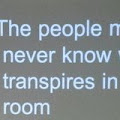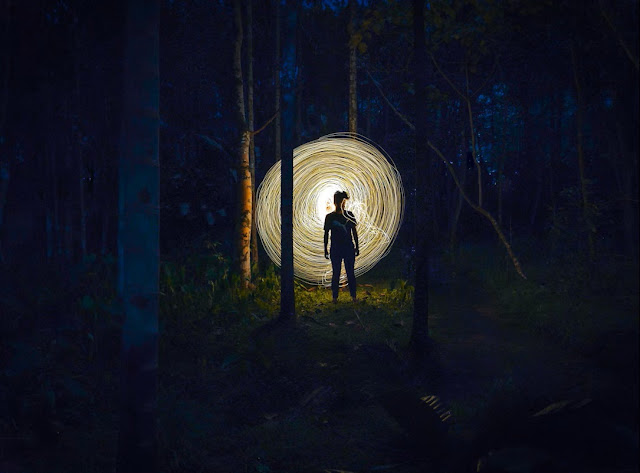E. Jay Gilbert – Ghost Stories and Their Afterlives
E. Jay Gilbert has been collecting tales of the supernatural from her local area, a small village outside of Newcastle, for years and what surprised her most is how universal those are: not only in terms of recurring spectres that haunt us the world over, but also how similar our experience of ghost-telling is, wherever we grew up. Gilbert asks: why are we so fascinated by ghost stories and what do they tell us about the community and people who cultivate them? Why are some tropes universal, while others are very much unique to the place they haunt?
Dr E. Jay Gilbert is a writer, academic and researcher based in Oxford, originally from the north-east of England. She has an MA and MSt from the University of Oxford and a PhD from the University of Leicester and is a lecturer in Applied Linguistics at The Open University.
She currently co-edits The Banshee, a women’s literary journal with a particular focus on the supernatural.
Mark Norman – The Folklore of Churches and Churchyards
Mark Norman examines the traditions, customs, superstitions, and secular imagery found in
Christian churches and churchyards.
Expect vestiges of possible pagan symbols hidden in the fabric of the church building, learn the ways in which you can use the church and its grounds to divine who might die in the next twelve months, where you might find love, and how you might cure illnesses. Mark will offer more than a few surprises about the folklore that surrounds the church and churchyard and a fascinating insight into the social history of our place of traditional Sunday worship, all delivered with the academic rigor and accessible, engaging style for which the author is known.
Mark Norman is a folklorist and author based in Devon, in the southwest of the UK. He is the curator of the Folklore Library and Archive, a council member of the
Folklore Society, and the creator and host of
The Folklore Podcast.
Jeremy Harte – The Devil in Church
In the Middle Ages, thunder and lightning were seen as interventions from the devil-infested middle air. How did they become reduced to natural phenomena? At the height of a storm, parishioners would huddle in the most sacred and least safe building in the parish – the parish church, with its demon-dispelling bells jangled by a team of ringers who would be first to be destroyed when the lightning made contact. As the discharge ripped through the building, people saw what chronicle and sermon had primed them to see – a dragon, a fiend, a black pig or dog desecrating the sanctuary.
Incursions by the Prince of the Air were reported in much the same way from the sixth century to the sixteenth, except that cheap journalism replaced rumour as the best way to magnify reports. Suddenly in the 1630s this heightened language gives way to cool description – but not for scientific reasons: it was changes in theology that deprived of the Devil of his most dramatic stage entrance, still lovingly remembered for many years after in folk culture.
Jeremy Harte is inspired by landscape and the otherworldly. His book Explore Fairy Traditions won the Briggs award, followed by Cloven Country: The Devil and the English Landscape. Serving on the Council of the Folklore Society, he organises their Legendary Weekends. His essay, The Devil in Church, appears in The Megalithic Imperative: A Third Stone Anthology: A Journal of Archaeology, Folklore, Mythology and Earth Mysteries, 1994–2003 (Strange Attractor Press 2025).
Rachel Poulton – Unseen: In Search of the Sublime and Spirit of Place in the Haunted Landscape
 |
| © Rachel Poulton |
Rachel Poulton will share her quest for the sublime and spirit of place through intuitive walks in our eternal landscape. Tapping into the ancient atmospheres and recalling the folklore attached to legendary sites like The Wilmington Giant and Chanctonbury Ring, Rachel invites you to wander with her and explore the unseen landscape.
Rachel Poulton is a writer, photographer, and educator whose interests lie with our connections with the past and place. Her work examines philosophy, inner and outer landscapes, myth and reality, the past, the present, and the borderlands between. She is the author of
Get to know: Philosophy (Dorling Kindersley) and
The Little Book of Philosophy (Summersdale). She is also the founder of
Unseen Press – a small independent press, designing and publishing limited edition books, zines, and pamphlets.
Roger Luckhurst – The Lost Landscape of London’s Inner-City Dead
The Burial Act of 1852 stopped inner city burials in London after 20 years of commissions and
reports into the dire state of the city’s graveyards. The rise of the garden cemeteries like Highgate is well known, but the rapid disappearance or abandonment of many burial grounds in the city was only stopped by the plucky Isabella Holmes, who set out to document and try to preserve these sites forty years later in her 1894 gazetteer, The London Burial Grounds. London is still a patchwork landscape of forgotten or lost grounds, and Roger Luckhurst will illustrate this by exploring zones around the edges of the City of London for their vanished or marginalised places of rest for the dead.
Roger Luckhurst is Professor of Nineteenth-Century Studies at Birkbeck College, University of London. His books include Gothic: An Illustrated History (T&H, 2021), Zombies: A Cultural History (2015) and editions of novels by Bram Stoker, Robert Louis Stevenson and H. P. Lovecraft. His latest book is Graveyards: A History of Living with the Dead (T&H, 2025).
Icy Sedgwick – Northern Ghosts: The Barghest and Gytrash
The barguest occupies a strange position in the folklore of northern England because no one can agree on whether the barghest is a ghost, sprite, bogey-beast, fairy, death omen, or something else entirely. A legendary shapeshifter, it heralded the death of important folk in the area, while elsewhere bedeviling lone travellers, seemingly for the sake of pure mischief. Meanwhile, its fellow shapeshifter, the gytrash, appears in Yorkshire, loitering on lonely roads often as a dog or a horse. While some stories see the gytrash leading lone travellers astray, other stories see the gytrash take on a much more helpful role in putting lost travellers in the right direction. This talk will explore tales of the barguest and gytrash as they haunt the landscapes of northern England, and examine how you might discover whether you’ve encountered one or not.
Icy Sedgwick is the host of the Fabulous Folklore podcast, investigating the strange and often bizarre world of European folklore. In case she tires of all that folklore research, former ghost hunter Icy also writes Gothic horror fiction while studying for a PhD.
Icy's books include Rebel Folklore: Empowering Tales of Spirits, Witches and Other Misfits from Anansi to Baba Yaga and Ghostlore: Unveiling 50 Phantoms That Have Haunted History.
Tabitha Stanmore – Cunning Folk: Life in the Era of Practical Magic
It’s 1600 and you’ve lost your precious silver spoons, or maybe they’ve been stolen. Perhaps your child has a fever. Or you’re facing trial. Maybe you’re looking for love or escaping a husband. What do you do? In medieval and early modern Europe, your first port of call might well have been cunning folk: practitioners of magic who were a common, even essential part of daily life, at a time when the supernatural was surprisingly mundane. Drawing upon original research, historian Tabitha Stanmore will reconstruct a bygone world and explore the beauty and bafflement of being human.
Tabitha is a social historian of magic and witchcraft at the University of Exeter. She is part of the Leverhulme-funded Seven County Witch-Hunt Project, and her doctoral thesis was published as Love Spells and Lost Treasure: Service Magic in England from the Later Middle Ages to the Early Modern Period.
Owen Davies & Ceri Houlbrook – Legend-Tripping in the British Landscape
Legend-tripping is the act of visiting a particular place within the landscape because it is associated with a legend, often in the hope of witnessing a phenomenon as if the visitor themselves were in the legend. This behaviour has been heavily documented in North America, where it is interpreted as a rite of passage or ritual of rebellion for adolescents. However, it is not only the youth who engage in legend-tripping, and it is certainly not exclusive to North America.
Owen Davies and
Ceri Houlbrook will explore the nature, history, and landscapes of legend-tripping in Britain, from cryptids and ghosts to Robin Hood.
Owen Davies is Professor of Social History at the University of Hertfordshire. He is the author of numerous books, most recently Art of Grimoire and Troubled by Faith: Insanity and the Supernatural in the Age of the Asylum (both 2023). He has been described as Britain’s foremost academic expert on the history of magic.
Ceri Houlbrook is Senior Lecturer in Folklore and History at the University of Hertfordshire. Her books include The Magic of Coin-Trees (2018), Unlocking the Love-Lock (2021) and Ritual ‘Litter’ Redressed (2022). In addition to her scholarly work, she writes folklore-inspired fiction.
22 November 2025 10 am - 5 pm
In advance: Standard £25 / Living Support £17 / Student £21 (inc. £2 venue levy) Advance Tickets
Online: £12 (inc. £2 venue levy) Advance Tickets
Conway Hall, 25 Red Lion Square, London, WC1R 4RL
Tube: Holborn
London Fortean Email List
Age Recommendation: All ages. Under 16s must be accompanied by an adult.
 |
| We're waiting.... |












Comments
Post a Comment